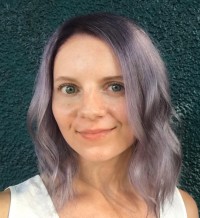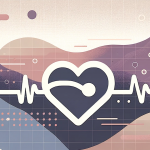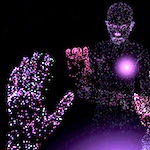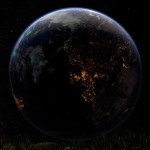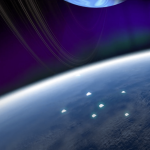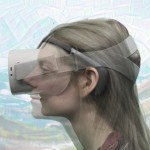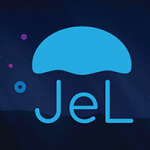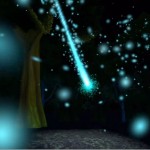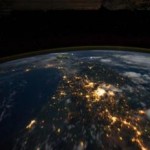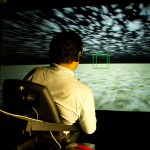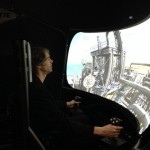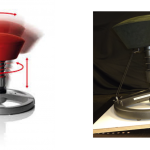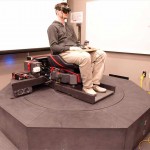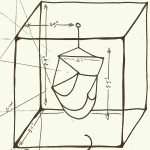Alex Kitson
Biography
Alex became a research intern at the iSPACE lab in January 2013, started her Masters in Fall 2014, and articulated into the PhD program in Fall 2015. She has a BSc from the University of British Columbia in Cognitive Systems, a multidisciplinary program that combines psychology, computer science, philosophy, and linguistics. Her research interests involve using an interdisciplinary approach to understand human perception and behaviour. In particular, employing technology as a medium to explore the human psyche, create better human-computer interfaces, and provide clinical applications.
Alex completed her PhD in December 2020, and is still collaborating on various projects in the iSpace lab.
See her recent interview for her experience as a SIAT grad student (and now postdoc).
Projects
Echoes of Me is an experience that invites participants into an intimate dialogue with themselves through an immersive XR journey inspired by research on self-compassion and perspective-taking in VR. The experience is designed to evoke conceptual change and feelings of self-compassion through virtual embodiment and embodied interaction. Echoes of Me is a guided encounter, not about becoming someon...
Empowering Emerging Adults through Compassion and Enhanced Social Connection: Co-creating a Compassionate Connection Oasis VR Toolkit (ccOasisVR)
Emerging adulthood (18-25) is a critical developmental phase, a tumultuous transition marked by heightened distress, and, unfortunately, a decreased likelihood that Emerging Adults (EAs) will seek support. The COVID-19 pandemic further exposed the urge...
Leveraging Virtual Reality for cultivating compassion, resilience, social connectedness, and healthy habits in emerging adults facing chronic health challenges
About half of youths with chronic physical conditions develop anxiety and/or depression, causing significant distress and disruption within their lives over many years. This underscores their need for well-being tools- particularly ones t...
We are investigating and creating a new virtual reality (VR) experience, 'Awedyssey', for the promotion and enhancement of well-being. Today, digital technology pervasively intersects with our daily lives, and VR stands out as a digital tool capable of fostering positive emotion like awe, self-transcendence, and authentic social connection.
Connecting with nature is very important for our mental...
Designing with Biosignals: Challenges, Opportunities, and Future Directions for Integrating Physiological Signals in Human-Computer Interaction
ABSTRACT
Biosensing technologies are a rapidly increasing presence in our daily lives. These sensor-based technologies measure physiological processes including heart rate, breathing, skin conductance, brain activity and more. Researchers are exploring...
Embodied Telepresent Connection (ETC): Exploring Virtual Social Touch Through Pseudohaptics
ETC (Embodied Telepresent Connection) is an artistic VR project exploring ways of eliciting a feeling of embodied connection telepresently through pseudohaptics. This project emerged during the beginning of COVID-19-related lockdowns when our social interactions began to inhabit nearly exclusively virtual ...
SIRIUS (Scientific International Research in Unique Terrestrial Station) is a series of on-land isolation experiments modelling long-term spaceflight in order to assess the psychophysiological effects of isolation on a crew and prepare for long-duration spaceflights, such as a trip to Mars. An 8-month-long isolation study commenced in Moscow on Nov 4th, 2021, where a crew of 6 people (from Roscosm...
Flying dreams have the potential to evoke a feeling of empowerment (or self-efficacy, confidence in our ability to succeed) and self-transcendent experience (STE), which have been shown to contribute to an individual’s overall well-being. However, these exceptional dreaming experiences remain difficult to induce at will. Inspired by the potential of Virtual Reality (VR) to support profound emoti...
Experience space like never before: An awe-inspiring VR experience that takes place in space where the Sun and stars react to biosensors.
BioSpaceVR seeks to provide a virtual self-transcendent experience. Self-transcendent experiences are characterized by the feeling of unity with others and the world. Our project is a bio-responsive VR experience that creates an almost childlike experience of ...
Artist Statement
Transcending Perception is an interactive Virtual Reality (VR) installation developed by John Desnoyers-Stewart that allows participants to collaborate in the creative, improvisational production of multisensory experiences. Bodies and space are transformed into instruments which translate presence into performance. This installation reminds participants that they are cre...
Can VR and neurofeedback deep learning art help enhance attention and lucid dreaming practice?
Lucid dreaming, knowing one is dreaming while dreaming, is an important tool for exploring consciousness and bringing awareness to different aspects of life. We created a system called Lucid Loop: a virtual reality experience where one can practice lucid awareness via neurofeedback. Visuals are creativ...
Can a bio-responsive generative art installation foster interpersonal synchronization and connection?
JeL is a bio-responsive, immersive, interactive, generative art installation designed to encourage physiological synchronization between the immersants. In this project, we will be exploring how novel forms of interaction can be included in immersive technology to foster the feeling of connection...
Do you get enough “awe” in your life? In our busy day-to-day lives, we often take our experiences for granted. While we have the technology to connect with one another, like smart phones, we don’t necessarily get outside with nature, or stargaze. Such activities may consist of common awe-inspiring moments, and we now understand that feeling awe is associated with all sorts of social and well...
How can we use immersive VR to give people pivotal positive experiences without having to send them out into space?
“We went to the Moon as technicians, we returned as humanitarians” reflected Edgar Mitchell after his space flight. This describes the overview effect – a profound awe-inspiring experience of seeing Earth from space resulting in a cognitive shift in worldview, le...
How do we best design locomotion interfaces for VR that provide "enough" physical motion cues (vestibular/proprioceptive) while still being effective, affordable, compact, and safe?
Despite amazing progress in computer graphics and VR displays, most affordable and room-sized VR locomotion interfaces provide only little physical motion cues (e.g., vestibular & proprioceptive cues). To provide...
Flight after death: Lost Spirit is an experiential-based Virtual Reality (VR) game whereby the player is transported into the spirit world as they take flight to the afterlife.
Experience flight, weightlessness, and wonder. In Lost Spirit, you are stuck in the limbo - a world between the living and the dead. You will drift and fly through different environments, each corresponding to different...
Developing virtual interfaces for embodied tele-operation and locomotion.
How can we best design and implement an embodied telepresence system for tele-robotics, so we can safely explore remote, hard-to-reach, or potentially hazardous areas or situations?
The goal of the "TeleSpider" project is to design and implement a telepresence system where users can remotely operate a robotic spid...
Using motion seats for enhancing locomotion and immersion in VR
How can we provide a "moving experience" through VR without having to use a full-scale motion platform?
Could a compact and relatively low-cost "motion seat" provide some of the same benefits, thus reducing cost, complexity, space & safety requirements?
Despite considerable advances in Simulation and Virtual Real...
How can we use immersive Virtual Reality and embodied locomotion interfaces to to design more cost- and space-efficient solutions for effective presentation and communication of architectural designs and ideas?
Our overall goal is to iteratively design and evaluate a novel embodied VR system that enables users to quickly, intuitively, and precisely position their virtual viewpoint in 3D space...
How important are physical motions for effective spatial orientation in VR?
Most virtual reality simulators have a serious flaw: Users tend to get easily lost and disoriented as they navigate. According to the prevailing opinion, this is because physical motion cues are absolutely required for staying oriented while moving. In this study, we investigated how physical motion cues contribute ...
Sonic Cradle suspends the body is a completely dark chamber which encourages experiences comparable to mindfulness meditation. Users compose peaceful soundscapes in real-time using only their breathing.
[vimeo 35764652]
Introduction and demo of the Sonic Cradle
Sonic Cradle is a relaxing human-computer interaction paradigm designed to foster meditative attentional patterns. The current p...
Publications
http://ispace.iat.sfu.ca/wp-content/plugins/zotpress/
37904
Stepanova, E. R., Heyde, M. von der, Kitson, A., Schiphorst, T., & Riecke, B. E. (2017). Gathering and Apply Guidelines for TeleSpider Design for Urban Search and Rescue Applications on a Mobile Robot. In M. Kurosu (Ed.), Human-Computer Interaction. Interaction Contexts (HCI 2017) (Vol. 10272, pp. 562–581). Springer.
37904
Wrainwright, N., Stepanova, E. R., Aguilar, I., Kitson, A., & Riecke, B. E. (2019, June).
Transcending the Lab: Supporting Self-Transcendent Experiences in VR [Talk]. FCAT Undergraduate Conference, Surrey City Hall, BC, Canada.
https://www.sfu.ca/fcat/events/ugc.html
37904
Kitson, Alexandra, and Bernhard E. Riecke. 2018. “Going Beyond: Lucid Dreaming as a Lens into Transformative Experience Design for Virtual Reality.” Symposium presentation presented at the 23rd Annual CyberPsychology, CyberTherapy & Social Networking Conference, Gatineau, Canada, June.
http://interactivemediainstitute.com/cypsy23/.
37904
Stepanova, Ekaterina, Denise Quesnel, Alexandra Kitson, Mirjana Prpa, Ivan Aguilar, and Bernhard E. Riecke. 2018. “A Framework for Studying Transformative Experiences through VR.” Symposium presentation presented at the 23rd Annual CyberPsychology, CyberTherapy & Social Networking Conference, Gatineau, Canada, June.
http://interactivemediainstitute.com/cypsy23/.
37904
Kitson, Alexandra, Mirjana Prpa, and Bernhard E. Riecke. 2018. “Immersive Interactive Technologies for Positive Change: A Scoping Review and Design Considerations.” Frontiers in Psychology 9: 1–19. https://doi.org/10.3389/fpsyg.2018.01354.
37904
Kitson, A., Riecke, B. E., & Gaggioli, A. (2019). Digital Wellbeing: Considering Self-transcendence.
ACM CHI 2019 Workshop on “Designing for Digital Wellbeing,” 1–4.
https://digitalwellbeingworkshop.wordpress.com/position-papers/
37904
Kitson, Alexandra J., Reese Muntean, Steve DiPaola, and Bernhard E. Riecke. 2022. “Lucid Loop: Exploring the Parallels between Immersive Experiences and Lucid Dreaming.” DIS ’22 Proceedings of the 2022 Conference on Designing Interactive Systems (ACM DIS ’22) (Australia), 1–16.
37904
Kitson, Alexandra, Steve DiPaola, and Bernhard E. Riecke. 2019. “Lucid Loop: A Virtual Deep Learning Biofeedback System for Lucid Dreaming Practice.” Extended Abstracts of the 2019 CHI Conference on Human Factors in Computing Systems (Glasgow, United Kingdom), 1–6. https://doi.org/10.1145/3290607.3312952.
37904
Kitson, Alexandra, and Bernhard E Riecke. 2018. “Can Lucid Dreaming Research Guide Self-Transcendent Experience Design in Virtual Reality?” (Reutlingen, Germany), March, 1–4.
37904
Kitson, Alexandra, Thecla Schiphorst, and Bernhard E. Riecke. 2018. “Are You Dreaming? A Phenomenological Study on Understanding Lucid Dreams as a Tool for Introspection in Virtual Reality.” Proceedings of the SIGCHI Conference on Human Factors in Computing Systems (Montréal, Québec, Canada), April, 343:1-343:12. https://doi.org/10.1145/3173574.3173917.
37904
Kitson, Alexandra, Daniel Sproll, and Bernhard E. Riecke. 2016. “Influence of Ethnicity, Gender and Answering Mode on a Virtual Point- to-Origin Task.” Frontiers in Behavioral Neuroscience 11 (22): 1–18. https://doi.org/10.3389/fnbeh.2016.00022.
37904
Sirius. (2021, October 1). [Curated & peer-reviewed Virtual Reality Exhibition]. V-Unframed, Vancouver, BC, Canada.
https://www.alliancefrancaise.ca/v-unframed/the-artworks/sirius/
37904
Kitson, Alexandra, Steve DiPaola, and Bernhard E. Riecke. 2019. “Can We Support Lucid Dreaming Practices with a Creative Deep Learning Algorithm and Immersive Virtual Reality Biofeedback System?” Poster presented at the 24th Annual CyberPsychology, CyberTherapy & Social Networking Conference (CyPsy24), Norfolk, VA, USA, June.
https://www.interactivemediainstitute.com/cypsy24/.
37904
Kitson, Alexandra, Mirjana Prpa, and Bernhard E. Riecke. 2017. “Designing Virtual Environments for Breath-Awareness and Eliciting Positive Affective States.” Poster presented at the 3rd Annual Innovations in Psychiatry and Behavioral Health: Virtual Reality and Behavior Change, Stanford University, CA, USA, October 6.
https://med.stanford.edu/cme/courses/2017/psychiatry17.html.
37904
Kitson, Alexandra, Thecla Schiphorst, and Bernhard E. Riecke. 2017. “Are You Dreaming? A Phenomenological Study on Understanding Lucid Dreams as a Tool for Introspection.” Presented at the CogSci Conference at SFU, Burnaby, BC, Canada, June 3.
37904
Prpa, Mirjana, Denise Quesnel, Jay Vidyarthi, Alexandra Kitson, and Bernhard E. Riecke. 2016. “Sonic Cradle - Immersive Interaction Design Combining Breathing- and Neurofeedback to Foster Focused Attention Meditation on Breath.” Poster presented at the 2nd International Conference on Mindfulness, Rome, Italy, May.
http://www.cmc-ia.org/icm2016rome/.
37904
Kitson, Alexandra, Daniel Sproll, and Bernhard E Riecke. 2014. “Does Movement Experience Influence Navigation Strategy in a Virtual Point-to-Origin Task?” Poster presented at the 55th Annual Meeting of the Psychonomic Society (Psychonomics), Los Angeles, USA.
37904
Riecke, Bernhard E., Ekaterina R. Stepanova, and Alexandra Kitson. 2016. “New Response Patterns in Point-to-Origin Tasks Depending on Stimulus Type and Response Mode.” Talk presented at the International Meeting of the Psychonomic Society, Granada, Spain, May.
https://youtu.be/miiPjAUb77Y.
37904
Kitson, Alexandra, Steve DiPaola, and Bernhard E. Riecke. 2019. “Lucid Loop: A Virtual Deep Learning Biofeedback System for Lucid Dreaming Practice.” Project Demo at Interactivity Hot Desk. ACM CHI Conference on Human Factors in Computing Systems, Glasgow, United Kingdom, Glasgow, United Kingdom.
37904
Kitson, Alexandra, Alice Chirico, Andrea Gaggioli, and Bernhard E. Riecke. 2020. “A Review on Research and Evaluation Methods for Investigating Self-Transcendence.”
Frontiers in Psychology 11.
https://www.frontiersin.org/articles/10.3389/fpsyg.2020.547687.
37904
Kitson, A. (2019, April 14). Lucid Loop: A Virtual Deep Learning Biofeedback System for Lucid Dreaming Practice.
Medium.
https://medium.com/acm-chi/lucid-loop-a-virtual-deep-learning-biofeedback-system-for-lucid-dreaming-practice-531f0dcf28a8
37904
Kitson, Alexandra, Reese Muntean, Steve DiPaola, and Bernhard E. Riecke. 2023. “Exploring Introspection with Lucid Loop: A Neurofeedback-Augmented Immersive Experience.” In
26th Annual CyberPsychology, CyberTherapy & Social Networking Conference (CYPSY26), 1. Paris, France.
https://easychair.org/smart-program/CYPSY26/2023-07-13.html.
37904
Kitson, Alexandra J. 2021. “How We Can Use Virtual Reality to Support Our Mental Health.” Talk presented at the TEDxSFU, Vancouver, BC, Canada, November.
https://www.ted.com/talks/alexandra_kitson_how_we_can_use_virtual_reality_to_support_our_mental_health.
37904
Quesnel, Denise, Ekaterina R. Stepanova, Ivan Aguilar, Alexandra Kitson, and Bernhard E. Riecke. 2017. “AWE.” Invited Virtual Reality Exhibition. SPLASH, Vancouver, BC, Canada, Vancouver, BC, Canada.
37904
Quesnel, Denise, Ekaterina R. Stepanova, Ivan Aguilar, Alexandra Kitson, and Bernhard E. Riecke. 2017. “AWE.” Invited Virtual Reality Exhibition. TEDxEastVan, Vancouver, BC, Canada, Vancouver, BC, Canada.
37904
Quesnel, Denise, Ekaterina R. Stepanova, Ivan Aguilar, Alexandra Kitson, and Bernhard E. Riecke. 2017. “AWE.” Invited Virtual Reality Exhibition. TEDxSFU, Vancouver, BC, Canada, Vancouver, BC, Canada.
37904
Kitson, Alexandra, Ekaterina R. Stepanova, Abraham M. Hashemian, et al. 2016. “TeleSpider: Investigating Motion-Cueing Interfaces for Control of a Remote Robotic Spider.” Project exhibition. Consumer Virtual Reality (CVR) conference, Vancouver, BC, Canada, Vancouver, BC, Canada, May 14.
37904
Stepanova, Ekaterina R., Denise Quesnel, Alexandra Kitson, Mirjana Prpa, and Bernhard E. Riecke. 2017. “Virtual Reality as a Tool for Inducing and Understanding Transformative Experiences.” Poster presented at the Psychonomic Society 58th Annual Meeting, Vancouver, BC, Canada, November.
37904
Kitson, Alexandra, Thinh Nguyen-Vo, Abraham M. Hashemian, Ekaterina R. Stepanova, and Bernhard E. Riecke. 2017. “A User Study Comparing Two Low-Cost Chair Interfaces for Embodied Virtual Locomotion.” Talk presented at the Psychonomic Society 58th Annual Meeting, Vancouver, BC, Canada, November.
37904
Kitson, Alexandra, Timofey Y. Grechkin, Markus von der Heyde, and Bernhard E. Riecke. 2017. “Navigating Virtual Environments – Do Physical Rotations Aid in Orientation?” Poster presented at the Second International Workshop on Models and Representations in Spatial Cognition, Tübingen, Germany, April 6.
37904
Kitson, Alexandra, Timofey Y. Grechkin, M. von der Heyde, and Bernhard E Riecke. 2016. “Effect of Physical Rotations and Gender for Navigation Performance in Virtual Environments.” Poster presented at the International Meeting of the Psychonomic Society, Granada, Spain, May.
http://www.ps2016.org/.
37904
Desnoyers-Stewart, John, Ekaterina R Stepanova, Pinyao Liu, et al. 2023. “Embodied Telepresent Connection (ETC): Exploring Virtual Social Touch Through Pseudohaptics.” Extended Abstracts of the 2023 CHI Conference on Human Factors in Computing Systems (Hamburg, Germnay), CHI EA ’23, 1–7. https://doi.org/10.1145/3544549.3585843.
37904
Miller, Noah, John Desnoyers-Stewart, Ekaterina R. Stepanova, et al. 2023. “Awedyssey.” Curated Mixed Reality Exhibition. Cosmic Nights: Humans in Space, H.R. MacMillan Space Centre, H.R. MacMillan Space Centre, November 23.
https://events.sfu.ca/event/37966-cosmic-nights-humans-in-space.
37904
Desnoyers-Stewart, John, Ekaterina R Stepanova, Pinyao Liu, et al. 2023. “Embodied Telepresent Connection (ETC): Exploring Virtual Social Touch Through Pseudohaptics.” Curated Virtual Reality Exhibition. Intangible Realities Lab Virtual Reality Exhibit, Santiago de Compostella, Spain, Santiago de Compostella, Spain, April 20.
www.intangiblerealitieslab.org.
37904
Liu, Pinyao, Bernhard E. Riecke, Alexandra J. Kitson, and Katerina Stepanova. 2021. “In Air We Dream.” Curated Virtual Reality Exhibition. Recto VRso Vancouver 2020, Vancouver, BC, Canada, Vancouver, BC, Canada, October.
https://www.alliancefrancaise.ca/v-unframed/.
37904
Miller, Noah, John Desnoyers-Stewart, Ekaterina R. Stepanova, et al. 2021. “Sirius.” Curated & peer-reviewed Virtual Reality Exhibition. V-Unframed, Vancouver, BC, Canada, Vancouver, BC, Canada, October 1.
https://www.alliancefrancaise.ca/v-unframed/the-artworks/sirius/.
37904
Miller, Noah, Ekaterina R. Stepanova, John Desnoyers-Stewart, et al. 2023. “Awedyssey: Design Tensions in Eliciting Self-Transcendent Emotions in Virtual Reality to Support Mental Well-Being and Connection.” Proceedings of the 2023 ACM Designing Interactive Systems Conference (New York, NY, USA), DIS ’23, July 10, 189–211. https://doi.org/10.1145/3563657.3595998.
37904
Stepanova, Ekaterina R, John Desnoyers-Stewart, Alexandra Kitson, et al. 2023. “Designing with Biosignals: Detailed Workshop Description.” Designing Interactive Systems Conference (DIS ’23) (Pittsburgh, PA, USA), 1–6.
37904
Stepanova, Ekaterina R, John Desnoyers-Stewart, Alexandra Kitson, et al. 2023. “Designing with Biosignals: Challenges, Opportunities, and Future Directions for Integrating Physiological Signals in Human-Computer Interaction.” Designing Interactive Systems Conference (DIS Companion ’23) (Pittsburgh, PA, USA), 1–4.
37904
Miller, Noah, John Desnoyers-Stewart, Ekaterina R. Stepanova, Alexandra Kitson, Jim Bizzocchi, and Bernhard E. Riecke. 2022. “Sipping the Virtual Elixir: An Autoethnographic Close Reading of Ayahuasca Kosmik Journey a Self-Transcendent Virtual Experience.”
Extended Senses (Full Paper) (London, UK), September 8, 1–8.
http://extendedsenses.co.uk.
37904
Liu, Pinyao, Ekaterina R Stepanova, Alexandra J. Kitson, Thecla Schiphorst, and Bernhard E. Riecke. 2022. “Virtual Transcendent Dream: Empowering People through Embodied Flying in Virtual Reality.” Proceedings of the SIGCHI Conference on Human Factors in Computing Systems (New Orleans), 1–18. https://doi.org/10.1145/3491102.3517677.
37904
Kitson, Alexandra J., Ekaterina R Stepanova, Ivan Abdo Aguilar, Natasha Wainwright, and Bernhard E Riecke. 2020. “Designing Mind(Set) and Setting for Profound Emotional Experiences in Virtual Reality.” Paper presented ACM DIS, Eindhoven, Netherlands.
Proceedings of the Designing Interactive Systems (ACM DIS) Conference (Eindhoven, Netherlands).
https://dis.acm.org/2020/.
37904
Kitson, Alexandra J., John Desnoyers-Stewart, Noah Miller, Ashu Adhikari, Ekaterina R. Stepanova, and Bernhard E. Riecke. 2020. “Can We Trust What’s Real? Using Fiction to Explore the Potential Dissociative Effects of Immersive Virtual Reality.” Paper presented Ethics of MR’20 Workshop at ACM CHI 2020 (Exploring Potentially Abusive Ethical, Social and Political Implications of Mixed Reality Research in HCI), Honolulu, HI, USA. (Honolulu, HI, USA).
37904
Miller, Noah, John Desnoyers-Stewart, Ekaterina R. Stepanova, Alexandra Kitson, Jim Bizzocchi, and Bernhard E. Riecke. 2022. “Sipping the Virtual Elixir: An Autoethnographic Close Reading of Ayahuasca Kosmik Journey, a Self-Transcendent Virtual Experience.” Virtual Creativity 12 (Extended Senses: Embodying Technology): 27–44. https://doi.org/10.1386/vcr_00059_1.
37904
Miller, Noah, Jacob Sauer, Pouya Salehi, Denise Quesnel, Alexandra Kitson, and Bernhard E. Riecke. 2025. “Echoes of Me.” Curated Virtual Reality Exhibition. Signals Creative Tech Expo, DigiBC Creative Tech Studio, Vancouver, BC, Canada, DigiBC Creative Tech Studio, Vancouver, BC, Canada, October 3.
https://signals.digibc.org/.
37904
Chirico, Alice, Marta Pizzolante, Alexandra Kitson, Elena Gianotti, Bernhard E. Riecke, and Andrea Gaggioli. 2022. “Defining Transformative Experiences: A Conceptual Analysis.” Frontiers in Psychology, Section Emotion Science 13. https://doi.org/10.3389/fpsyg.2022.790300.
